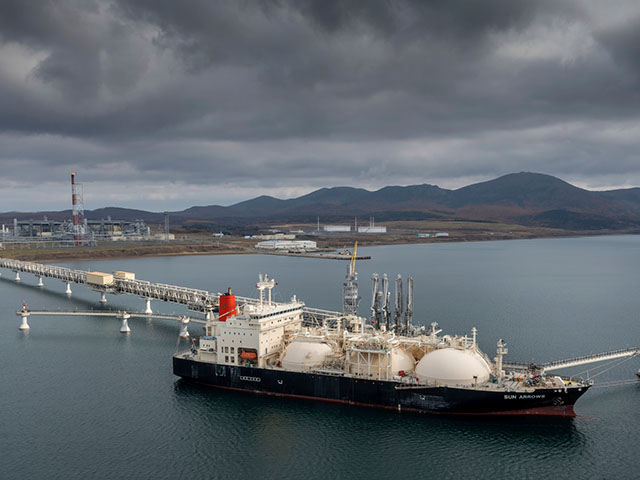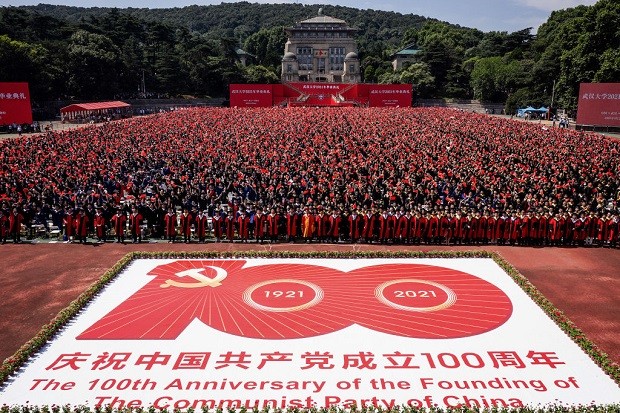Chinese exports to the United States fell by 12.2 percent in May, a much larger drop than expected and the first net reduction since February.
International analysts attributed the plunge to China’s faltering economy, while Chinese state media blamed American “decoupling” efforts for sabotaging the export market.
The export slump could be calculated in a variety of ways. International customs data reviewed by Reuters suggested a 7.5 percent year-on-year decline for May 2023, while China’s state-run Global Times figured the year-on-year decline was 5.5 percent if dollar volumes were considered, or 12.2 percent based purely on goods shipped to the United States.
All analysts agreed China’s export decline was much worse than anticipated, but Chinese state operatives sharply disagreed about the reason. The Global Times claimed the problem was the American economy flagging, not China’s, as President Joe Biden’s dizzying inflation levels and interest rate tightening left Americans with less money to spend on Chinese goods.
The Global Times also blamed tariffs held over from the Trump administration for “causing self-inflicted harm on U.S. consumers,” and complained about deliberate “decoupling” efforts to shift American imports to other sources.
The Chinese Communist paper strove to present China as the free-trading alternative to an increasingly isolationist United States – a hilarious assertion for anyone familiar with China’s heavy tariffs, viciously unfair trading policies, intellectual property theft, debt colonialism, and ruthless appetite for using economic leverage to manipulate other countries.
The Global Times asserted:
In contrast to the US’ decoupling attempt, China has been unswervingly pushing for opening-up and sharing its growth dividends with the world, and the country is set to become both a stabilizer and a locomotive for global development.
It has embraced diversified foreign trade markets around the world, with growing trade momentum with ASEAN, and countries along the Belt and Road Initiative (BRI).
In the first five months, the structure of China’s foreign trade continued to improve, with the country’s trade with its major trade partners posting noteworthy growth.
International analysts, on the other hand, saw “lackluster U.S. demand” due to high inflation and interest rates as only part of the explanation.
CNBC quoted China economics analyst Julian Evans-Pritchard of Capital Economics discussing “subdued global demand for Chinese goods,” while chief economist Hao Hong of the Grow Investment Group said the “longer-term trend is down” for at least the rest of this year.
China’s imports are down as well, but in that case the forecast was higher – an eight-percent drop was anticipated, but the actual year-on-year decline in imports for May was 4.5 percent. Evans-Pritchard predicted imports will “continue to recover over the coming quarters as the boost from reopening continues to feed through,” meaning reopening from China’s coronavirus lockdown policies.
The Associated Press (AP) had a somewhat gloomier forecast on Wednesday, pointing to signs that China’s post-lockdown recovery is “slowing,” domestic consumer activity and factory output are “lackluster,” and unemployment is surging among Chinese youth:
Factory output and consumer spending revived after controls that cut off access to major cities for weeks at a time and blocked most international travel were lifted in December. But forecasters say the peak of that rebound probably has passed.
Retail spending is recovering more slowly than expected because jittery consumers worry about the economic outlook and possible job losses. A government survey in April found a record 1 in 5 young workers in cities were unemployed.
Factory activity is contracting and employers are cutting jobs after interest rate hikes to cool inflation in the United States and Europe depressed demand for Chinese exports.
The AP doubted China would hit the modest five percent annual growth target set by Beijing. Lloyd Chan of Oxford Economics said the “disappointing” numbers from the past few months suggest “China’s domestic demand recovery has lost steam following the reopening-induced bounce.”
“China’s exports will remain subdued, as we anticipate the U.S. economy to enter recession,” Chan added, seeing trouble on both sides of the Pacific.
China’s economy is still growing fast enough to support heavy demand for Russian oil and gas, which means China is still pouring billions into Russian President Vladimir Putin’s war machine and reducing the pain of U.S. and European sanctions.

The tanker Sun Arrows loads its cargo of liquefied natural gas from the Sakhalin-2 project in the port of Prigorodnoye, Russia, on Friday, Oct. 29, 2021. A new report says Russia sent significantly more oil and coal to India and China over the summer compared with the start of the year, while European countries that long relied on Russian energy have cut back sharply in response to the conflict in Ukraine. (AP Photo, File)
China’s trade with Japan, Europe, and Southeast Asia is down as well, including a remarkable 20-percent drop in imports from Taiwan and South Korea.
“Speculation is growing that Beijing may have to deliver more stimulus to bolster growth. Some economists expect the central bank to cut the reserve requirement ratio for banks in coming months, while others argue an interest rate cut may be necessary, possibly as early as next week,” Bloomberg News reported on Wednesday.
The 20 percent youth unemployment rate mentioned by the AP was a record high for China in April, roughly four times the unemployment figure for the general population.
“This college bubble is finally bursting. The expansion of college education in the late 1990s created this huge influx of college graduates, but there is a misalignment between demand and supply of high skilled workers. The economy hasn’t caught up,” Columbia University sociology professor Yao Lu told CNBC in late May.

Graduates of Wuhan University pose for photos in front of an image commemorating the 100th anniversary of the Chinese Communist Party as they attend the graduation ceremony in Wuhan, in China’s central Hubei province. (STR/AFP via Getty Images)
“Increasingly, college graduates are taking up positions that are not commensurate with their training and credentials to avoid unemployment,” Lu noted.
Analysts predicted political unrest from disappointed youth in the near future and, beyond that, high unemployment and under-employment among young people could spell big trouble for the demographic-driven financial crash China, and other industrialized nations, are facing.
CNBC noted China has one of the worst youth unemployment problems in the world and one of the major reasons is that young people have been educated enough to refuse a life of factory work – but not enough to fill the smaller-than-expected high-tech jobs that were supposed to be created by China’s economic policies.
“I think it’s ironic that nowadays, having a college degree is no longer sufficient to land a high skilled job for most college graduates. But at the same time, it’s becoming more necessary because everyone else is getting it,” said Lu.

COMMENTS
Please let us know if you're having issues with commenting.